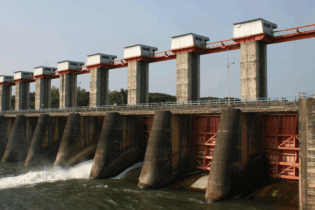The Covid-19 pandemic and resultant lockdown to curb the spread of the virus in South Africa has had an immense impact on every business sector, and its effect is likely to be felt long after lockdown has been lifted.
By Eckart Zollner Head of Business Development at EDS Systems Significant disruption to the productive capacity of the economy has manifested through business closures, retrenchments and impaired balance sheets. The spending ability of consumers has dropped and is expected to fall even more which will compound the financial blow to the manufacturing industry. Carbon Tax will further create pressure for businesses, particularly in the manufacturing sector, and cannot be ignored. The recent implementation of the Carbon Tax Act is going to put strain on the pollution-heavy industry’s bottom line, such as the manufacturing sector, by making it expensive for these businesses to ignore their duty to assess and reduce emissions. While there’s been a three-month deferment of the tax deadline in response to the pandemic, companies should not delay in tracking, quantifying and visualising their carbon footprint in preparation. Preparing the manufacturing industry for carbon taxIn addition to the world’s fifth largest mining sector, our economy is relianton heavy industry, which is powered by electricity, and thus largely coal dependent. 10.6% of the world’s GHG emissions come from the industrial and manufacturing sector, which produces goods and processes raw materials every single day. These activities are collectively heavy on fossil fuels and electricity, and in turn produce a large share of emissions. How does the Carbon Tax Act work? Effective since 1 June 2019, the Carbon Tax Act together with the Customs and Excise Amendment Act, is intended to reduce Greenhouse Gas (GHG) emissions in a manner that is sustainable yet compelling. In a further attempt to encourage businesses to reduce their carbon emissions, an initial levy of R120 per ton of carbon dioxide equivalent (CO2e) will be charged over the threshold of tax-free allowances.
The Act gives effect to the polluter-pays-principle for large emitters and forces businesses to take these costs into account for future production, consumption, and investment decisions, encouraging them to adopt cleaner technologies and production methods in the next decade. Framed to roll out in three phases, the Carbon Tax Act will only be applicable to scope 1 emitters in the first phase.
The first phase will be from 1 June 2019 to 31 December 2022, and the second phase from 2023 to 2030. In relation to a business’ operations, sources of GHG are classified according to the level of phases over making less emission intensive operational choices. In the first phase, direct emissions from the stationary combustion of fossil fuels (such as diesel generators) are taxable, while the second phase will address scope 2 emissions, which is gases that escape through venting or from landfills, and the third phase will address indirect emissions. Quantify the carbon footprint first The initial phase of the Act offers significant opportunity for relief in the form of tax-free emission allowances ranging from 60% to 95%. This includes a basic tax-free allowance of 60 percent for all activities plus a 10% process and fugitive emissions allowance. There is also a maximum 10% allowance for companies that use carbon offsets to reduce tax liability, as well as a performance allowance of up to 5% for companies that reduce the emissions intensity of activities. Furthermore, a 5% carbon budget allowance is provided for reporting compliance and a maximum 10% allowance for trade exposed sectors. It’s clear that the legislature has taken into consideration the need to balance aggressive measures to address climate change. This is coupled with the need to soften the financial impact on sectors such as manufacturing and heavy industry. In order to take advantage of these discounts and allowances, and adequately calculate tax liability, businesses in the manufacturing sector will need to assess their emissions and get a clear picture of their carbon footprint. Fortunately, this is not something organisations need to figure out how to do on their own, as there are a number of carbon tax analysis tools available on the market. If businesses haven’t already done so, it is advisable to look for homegrown solutions that are designed specifically for local conditions to make tax compliance easy. All it takes is for someone to input the process or emissions data into the carbon analytics tool to generate an automated, accurate report that details emissions by source. The tool can also calculate an exact tax liability amount and provide a solid foundation for carbon reduction in manufacturing in a way that minimises the impact on the bottom line.







